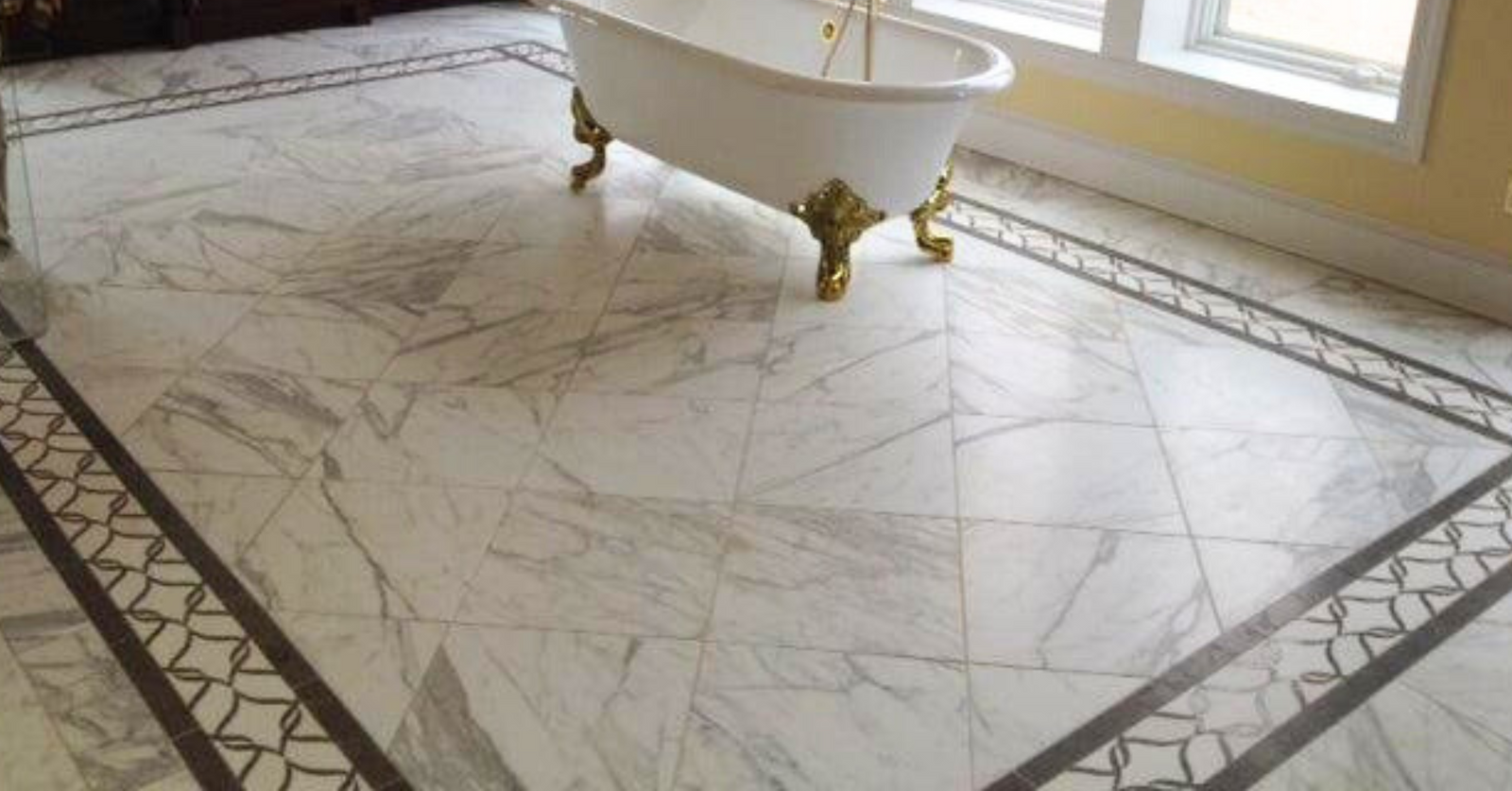Your Cart is Empty
The classic look of a Bianco Carrara bath is popular, and the current availability of field tile, moldings, and mosaics allows for many design options. But why are you constantly cautioned with the warning to “Install with white thinset only”?
White thinset (versus grey) is the standard recommendation for many stones, including Bianco Carrara, Calacata, Onyx, Thassos, most Limestone, and other light or translucent stones. It is also recommended for Bardiglio, Azul Macuba, and Azul Cielo. The use of a grey-colored thinset can result in discoloration of the stone or the appearance of oily stains on the face of the stone. It would be prudent to recommend the use of white thinset for all-natural stone installations, but that may not prevent yellowing from occurring completely.
Yellowing may still happen in a shower area where mud work or wet bed has been done using grey Portland cement. Why is white thinset insufficient in this application? The mud mix that is used in a shower pan is very dry and not all of the cement particles are thoroughly incorporated. When the stone is exposed to water, moisture penetrates the stone and grout and into the mud bed, activating the loose particles of cement. The shower pan prevents further penetration and the moisture slowly migrates back to the drain. The resulting chemical reaction manifests as yellow staining within the stone. This moisture penetration will even occur on floors that have been thoroughly sealed.
This oxidation process can only be minimized during the initial installation. One option is to use white Portland Cement with a low Akali content for the mud job; another would be to install a waterproof membrane, such as Laticrete 9235, on top of the mud. Alternatively, you could use a Kerdi Shower System which doesn’t even use mud which is the easiest installation method out there. The tile would then be installed with white thinset directly on the membrane. This creates a barrier that eliminates water from the mud bed thereby preventing the chemical reaction and oxidation.
This yellow discoloration can be removed by using a commercial poultice or with Hydrogen Peroxide, but the stains will continue to appear as the process is repeated. Ultimately, once the material is installed there isn’t a permanent solution.
The availability of so many wonderful Marbles, Granites, Limestones, Onyx, and others has greatly increased the use of natural stone in commercial and residential applications. Various post-installation issues usually do not reflect any defect in the stone, but rather an incorrect installation or the use of a stone that is not suitable for the specific application. Recommending white thinset as a setting material, having printed cautions and instructions available for specific uses (such as shower pans), understanding the nature of various stones, and the specification of products specifically developed for stone care will result in successful jobs and satisfied clients.
In conclusion, if you’re going to install white marble or light stone you should use a white-colored thinset and Portland Cement (or waterproof system). Do not use any grey mud or thinset that can penetrate through to the light stone. Also, after installation, continue to seal your stone at least once a year to prevent future staining.
Architects, Designers, and clients should be confident when selecting and specifying natural stone in your showroom. The only call you want to receive after the job is installed is one thanking you for your expertise and scheduling an appointment for further stone selection!
Note: for further technical information and specifications please refer to the TCNA Handbook

